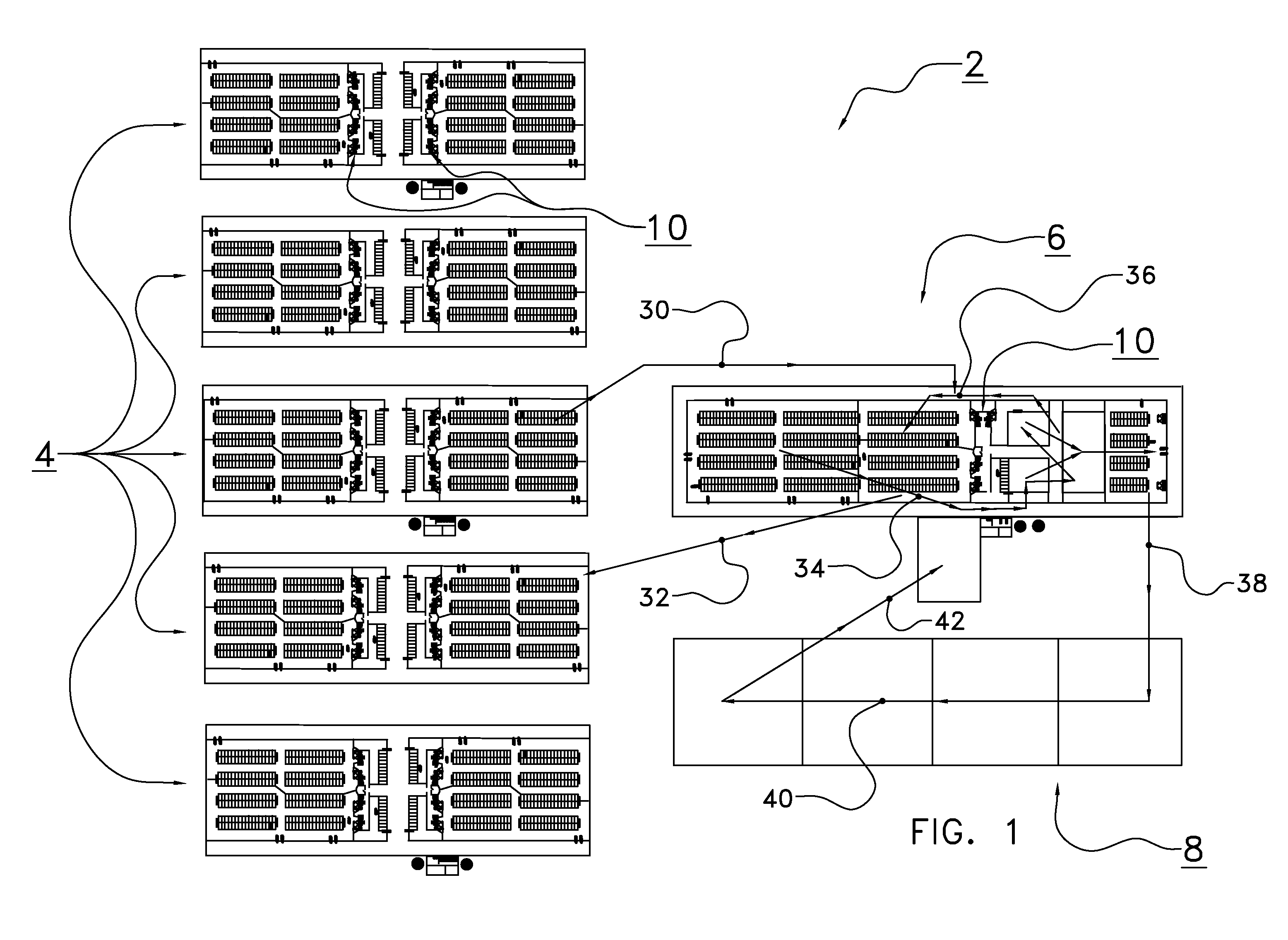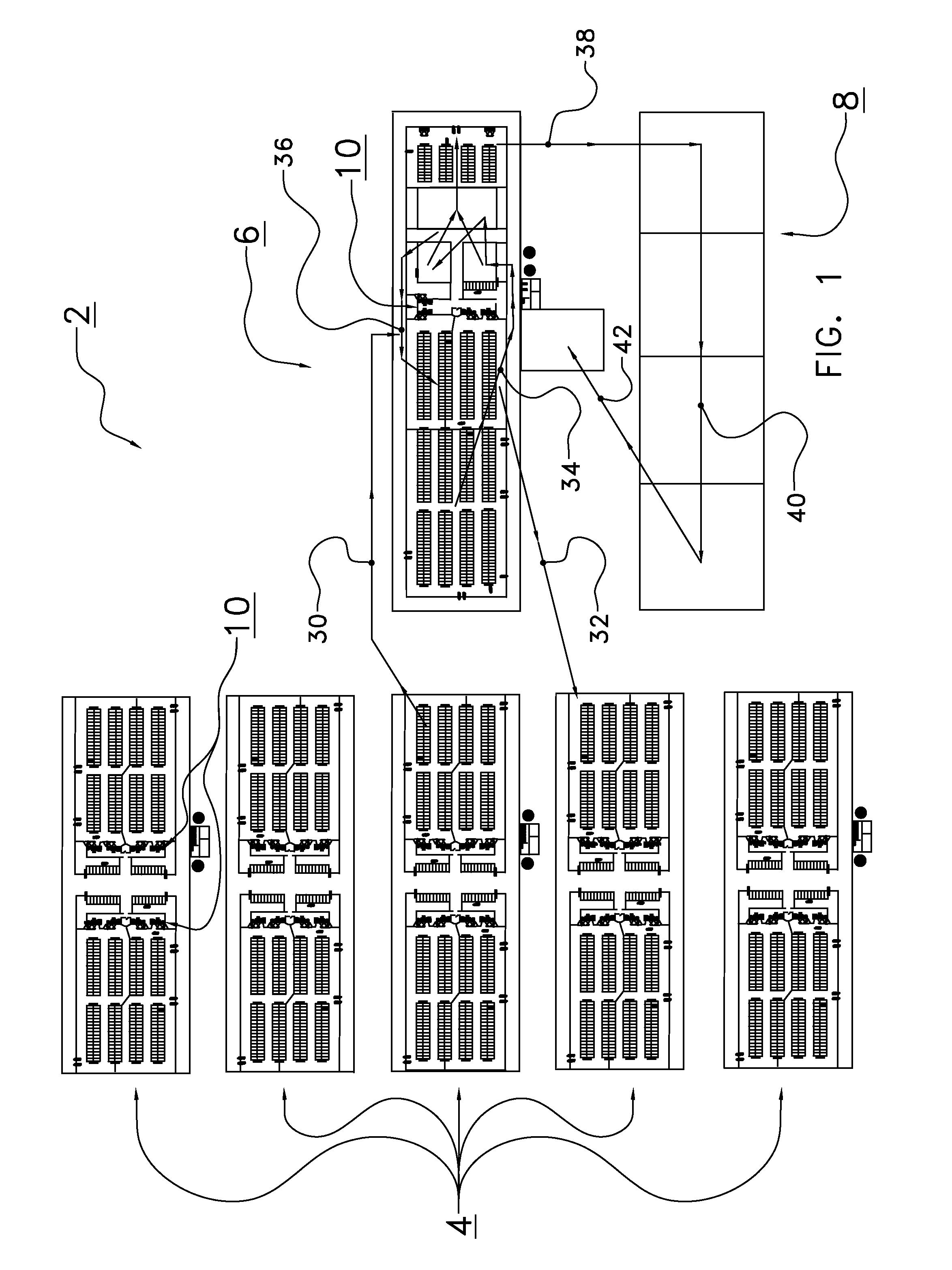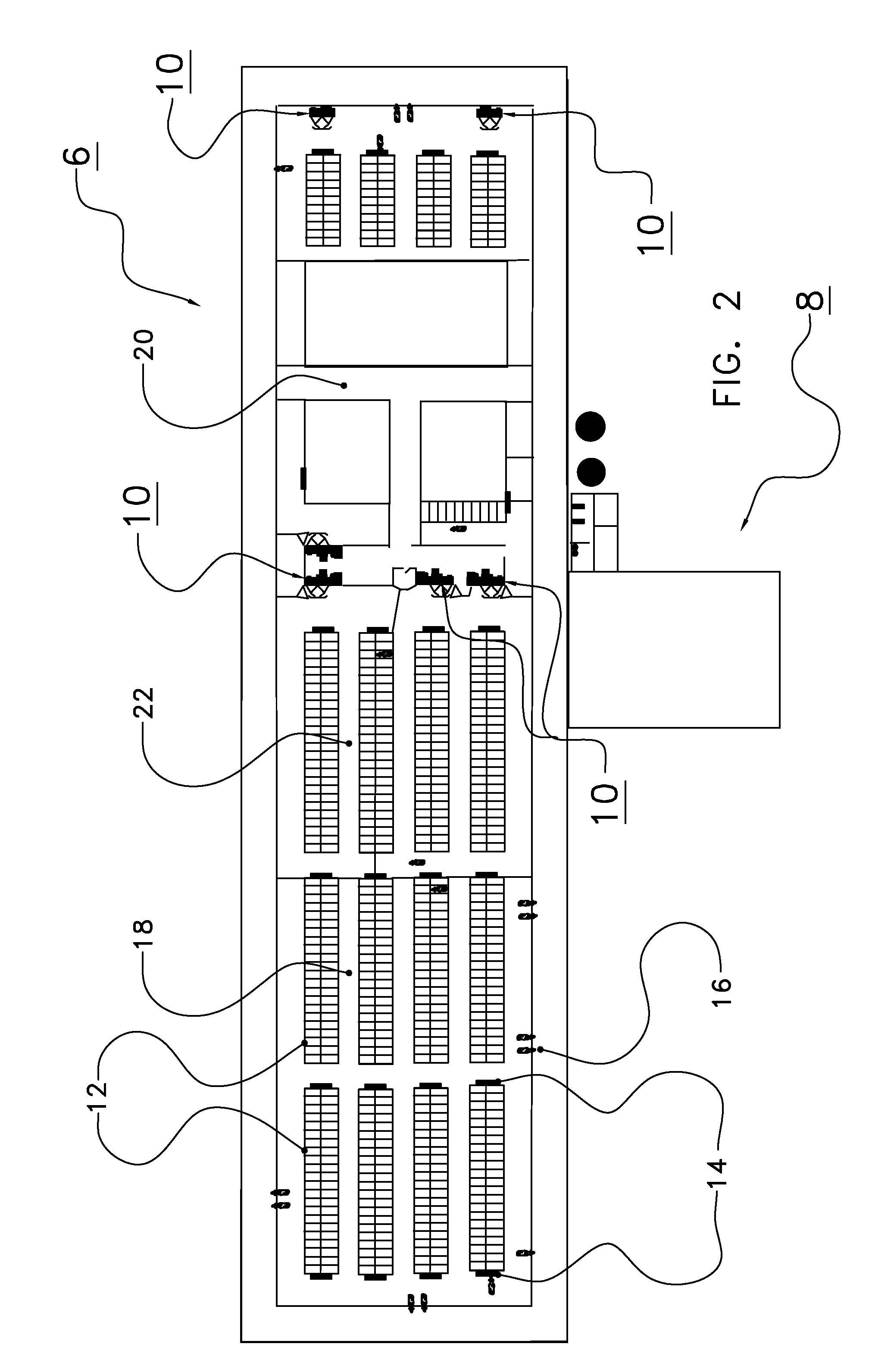System for managing a group of dairy animals
a management system and dairy animal technology, applied in the field of dairy animal management system and management method, can solve the problems of disturbing the production process of milking robots around the drying of dairy animals, and achieve the effects of preventing delay, increasing frequency, and increasing milk production
- Summary
- Abstract
- Description
- Claims
- Application Information
AI Technical Summary
Benefits of technology
Problems solved by technology
Method used
Image
Examples
Embodiment Construction
[0026]The following is a description of certain embodiments of the invention, given by way of example only and with reference to the drawings. In FIG. 1 a dairy farm as a whole is denoted by reference numeral 2. The dairy farm 2 comprises at least one production shed, in this embodiment five production sheds 4. The dairy farm 2 further comprises a separate calving shed 6 and calf sheds 8. The production sheds 4 and the calving shed 6 are provided with milking robots 10 for automatically milking dairy animals, in this embodiment cows. The production sheds 4 and the calving shed 6 are further provided with boxes 12, water tanks 14 and feed troughs 16.
[0027]In this embodiment, the production sheds have a capacity of approximately 500 cows. Also the calving shed has a capacity of approximately 500 cows, to which belong both the cows that are dried up and the cows that are meantime in the process of inmilking. There is thus obtained a total capacity of 3,000 cows. In the calving shed 6 m...
PUM
 Login to View More
Login to View More Abstract
Description
Claims
Application Information
 Login to View More
Login to View More - R&D
- Intellectual Property
- Life Sciences
- Materials
- Tech Scout
- Unparalleled Data Quality
- Higher Quality Content
- 60% Fewer Hallucinations
Browse by: Latest US Patents, China's latest patents, Technical Efficacy Thesaurus, Application Domain, Technology Topic, Popular Technical Reports.
© 2025 PatSnap. All rights reserved.Legal|Privacy policy|Modern Slavery Act Transparency Statement|Sitemap|About US| Contact US: help@patsnap.com



